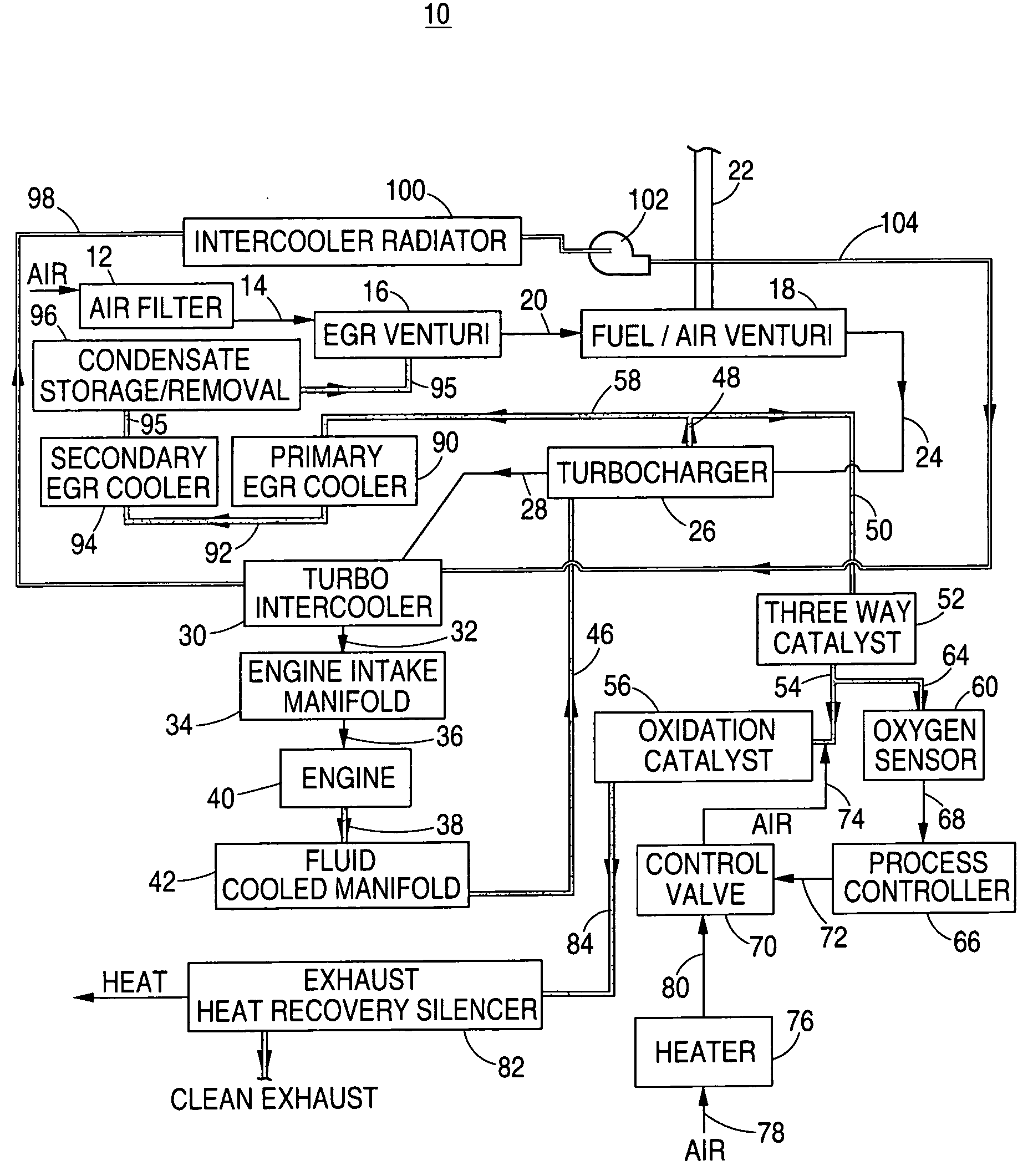Air flow regulation system for exhaust stream oxidation catalyst
a technology of air flow regulation and exhaust gas, which is applied in the direction of non-fuel substance addition to fuel, machines/engines, mechanical equipment, etc., can solve the problems of reducing the efficiency of oxidation catalysts, and reducing the degradation of exhaust gas temperatures. , to achieve the effect of enhancing the performance of oxidation catalysts, reducing the degradation of exhaust gas temperatures, and reducing the loss of catalytic conversion
- Summary
- Abstract
- Description
- Claims
- Application Information
AI Technical Summary
Benefits of technology
Problems solved by technology
Method used
Image
Examples
Embodiment Construction
[0024] In accordance with the instant system and method, air flow into the exhaust gas stream of a reciprocating internal combustion engine, upstream of an oxidation catalyst, is regulated such that oxidation of carbon monoxide, hydrocarbons, and ammonia is achieved beyond the levels attainable and maintainable with a catalyst system that relies only upon pre-combustion air / fuel ratio management or the uncontrolled introduction of air. The modulation of air flow into the exhaust upstream of the oxidation catalyst via a controlled feedback loop, ensures sufficient oxygen availability to induce maximum oxidation of unwanted pollutants while simultaneously limiting the exhaust cooling effect of the incoming air stream and, thus, the associated loss of catalytic conversion performance, as well as the loss of recoverable heat from the exhaust stream for combined heat and power applications.
[0025] Exemplary of one system, a natural gas fueled, internal combustion engine, employing exhaus...
PUM
 Login to View More
Login to View More Abstract
Description
Claims
Application Information
 Login to View More
Login to View More - R&D
- Intellectual Property
- Life Sciences
- Materials
- Tech Scout
- Unparalleled Data Quality
- Higher Quality Content
- 60% Fewer Hallucinations
Browse by: Latest US Patents, China's latest patents, Technical Efficacy Thesaurus, Application Domain, Technology Topic, Popular Technical Reports.
© 2025 PatSnap. All rights reserved.Legal|Privacy policy|Modern Slavery Act Transparency Statement|Sitemap|About US| Contact US: help@patsnap.com



